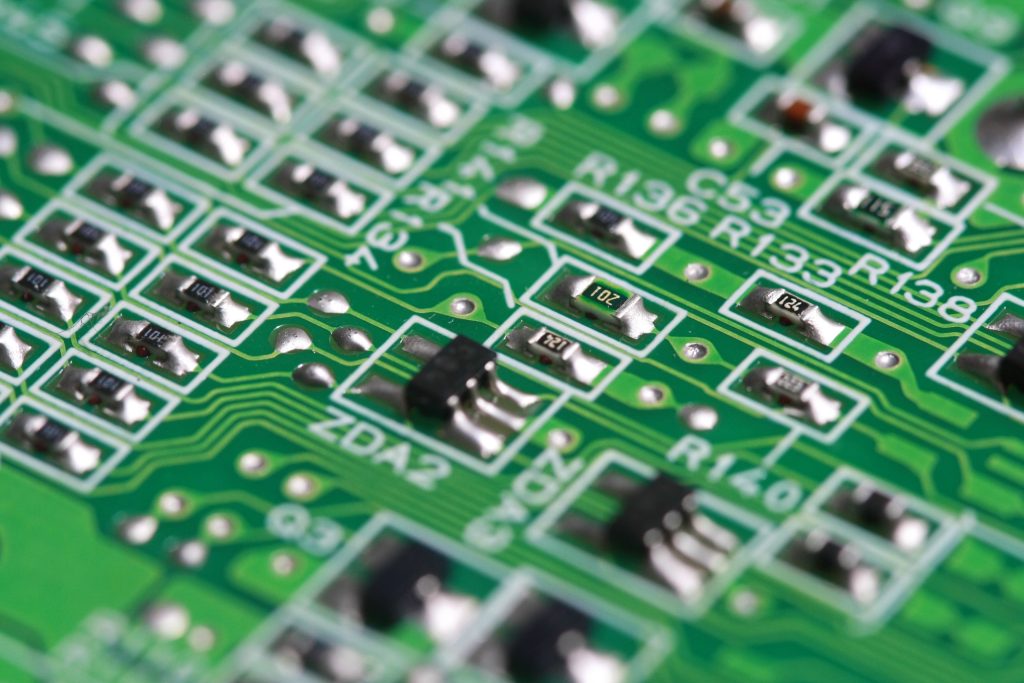1. Introduction to IPC Standards

What are IPC Standards?
IPC standards are a set of guidelines developed to maintain the quality, reliability, and consistency in the production of electronic products, including printed circuit boards (PCBs).
These standards have been widely adopted in the electronics industry, creating a common framework for manufacturers, designers, and suppliers.
Established in 1957, the IPC is the leading authority in defining the requirements and best practices for electronics manufacturing.
Importance of IPC Standards for PCBs
Adhering to IPC standards for PCBs is essential for maintaining product quality and reliability.
These standards help in standardising manufacturing processes, which improves communication among stakeholders and supports regulatory compliance.
By following these, manufacturers can produce PCBs that meet specific performance criteria, reducing the likelihood of defects and failures.
This boosts product quality and speeds up the development process, as clear guidelines help avoid costly mistakes and reworking.
The significance of this extends beyond quality assurance.
They also improve the efficiency of the supply chain, as suppliers and manufacturers have a clear understanding of the expected specifications and quality levels.
This standardisation facilitates smoother transactions and partnerships, providing that all parties involved are aligned in their objectives.
For stakeholders, adhering to these means increased product reliability, which ultimately leads to better customer satisfaction and faster time-to-market.
2. Key IPC Standards Overview
IPC-A-600: Acceptability of Printed Boards
IPC-A-600 defines the acceptability criteria for printed circuit boards (PCBs). It provides detailed guidelines on the visual inspection of PCBs, helping to maintain the necessary quality standards.
This standard is essential for manufacturers and inspectors as it establishes the criteria for defects and workmanship, promoting consistency and reliability in PCB production.
The standard covers various aspects of PCB acceptability, including surface finishes, conductor widths, and spacing, as well as the presence of defects such as scratches, pits, and voids.
By following IPC-A-600, manufacturers can produce PCBs that meet industry standards, reducing the risk of product failures and improving customer satisfaction.
Visual inspection guidelines provided by IPC-A-600 help identify common defects and classify them based on their severity, allowing manufacturers to address issues promptly.
IPC-A-600 also includes comprehensive illustrations and photographs to aid in the identification of acceptable and non-acceptable conditions.
These visual aids are invaluable for training inspectors and operators, meaning that everyone involved in the production process has a clear understanding of the quality requirements.
The standard is regularly updated to reflect the latest industry practices and technological advancements, making it a tool for maintaining high standards in PCB manufacturing.
Manufacturers benefit from adhering to IPC-A-600 by gaining a competitive edge in the market.
By producing PCBs that meet or exceed the standards, companies can build a reputation for quality and reliability, attracting more customers and business opportunities.
Furthermore, adherence to this standard can lead to cost savings by reducing the number of defective products and the need for rework, which then allows for streamlining of the manufacturing process.
IPC-6012: Performance Specification for Rigid Printed Boards
IPC-6012 outlines the performance criteria for rigid printed boards. This standard specifies the testing and inspection requirements necessary to verify that rigid PCBs meet the required performance levels for their intended applications.
IPC-6012 is widely used in the industry to define the quality and reliability standards for rigid PCBs, covering aspects such as material properties, structural integrity, and environmental performance.
One of the key elements of IPC-6012 is its focus on performance criteria.
The standard details various tests and inspections that rigid PCBs must undergo to confirm their compliance with the specified requirements.
These include electrical tests, thermal stress tests, and dimensional inspections, among others.
By adhering to IPC-6012, manufacturers can produce rigid PCBs capable of performing reliably under different operating conditions.
IPC-6012 also addresses the classification of PCBs into different performance classes, such as Class 1, Class 2, and Class 3, each with its own set of requirements and expectations.
This classification helps manufacturers and customers to align on the appropriate quality and reliability levels needed for specific applications.
The standard provides guidelines for the documentation and traceability of test results, which are used for quality control and compliance purposes.
Additionally, IPC-6012 highlights the use of material selection in achieving the desired performance characteristics.
It specifies the types of materials that can be used for various applications, and that the PCBs are constructed with the appropriate substrates, copper cladding, and surface finishes.
This focus on materials helps in achieving consistent performance and durability across different operating environments.
The standard also highlights the differences between IPC-6012 and other specifications, providing manufacturers with a clear understanding of the unique requirements for rigid PCBs.
This helps in selecting the appropriate standards for different types of PCBs, making sure they meet the necessary performance and reliability criteria.
By adhering to IPC-6012, manufacturers not only meet industry standards but also gain insights into best practices for PCB production.
This can lead to innovations in design and manufacturing processes, further improving the quality and reliability of rigid printed boards.x
3. IPC Classification Levels

Class 1: General Electronic Products
Class 1 standards apply to general electronic products where the primary requirement is function.
These products include consumer electronics and simple devices where extended life and continuous performance are not essential.
Examples of Class 1 products are household items and some low-end consumer goods.
Performance expectations for Class 1 products are moderate, with a focus on basic functionality rather than high reliability.
Inspection and testing criteria for Class 1 are less stringent compared to higher classes, allowing for a broader range of acceptable defects as long as the product performs its intended function.
Class 2: Dedicated Service Electronic Products
Class 2 standards are designated for dedicated service electronic products, which require extended life and continuous performance but do not demand the extreme reliability of Class 3 products.
Examples include communication equipment, business machines, and sophisticated consumer electronics.
Performance expectations for Class 2 products are higher than those for Class 1, with greater emphasis on reliability and durability.
Inspection and testing criteria are more stringent, with stricter controls on defects and workmanship.
Class 2 products must consistently perform as expected over their intended lifecycle.
Class 3: High-Reliability Electronic Products
Class 3 standards are reserved for high-reliability electronic products, where the failure of the product could result in significant consequences.
These products are used in applications such as aerospace, medical devices, and military equipment.
Performance expectations for Class 3 products are the highest, with an emphasis on both functionality and long-term reliability.
The inspection and testing criteria for Class 3 are the most rigorous, with very tight controls on defects and workmanship.
Products in this class must meet the strictest quality standards to make sure they operate reliably under all conditions.
Class 3 products undergo extensive testing, including environmental stress tests and detailed inspections, to verify that they meet the stringent requirements.
The high standards for Class 3 are necessary to guarantee that these products can withstand harsh conditions and maintain performance throughout their operational life.
4. IPC Standards for PCB Design
Design Requirements
These requirements provide detailed guidelines for PCB design to help maintain performance and reliability.
Key design considerations include layout and trace width standards, which are for maintaining signal integrity and minimising electromagnetic interference (EMI).
Proper layout helps electrical signals travel efficiently across the PCB without interference, which is essential for the functionality of electronic devices.
The IPC also sets standards for documentation and design reviews. These requirements help designers create clear and complete documentation that can be easily understood by manufacturers and inspectors.
Regular design reviews verify that PCBs meet all necessary specifications before they go into production, reducing the risk of errors and promoting a smoother manufacturing process.
Material Selection
Choosing the right materials for PCB fabrication is essential for meeting performance and reliability standards.
They specify the types of materials that can be used, including various substrates, copper cladding, and solder masks.
These materials must be selected based on their electrical properties, thermal performance, and compatibility with the intended application.
Material selection impacts the overall performance and durability of the PCB. For instance, high-frequency applications may require substrates with lower dielectric constants to reduce signal loss.
Environmental and regulatory considerations also play a role in material selection, as certain applications may require materials that comply with specific environmental standards or regulations.
By following these for material selection, manufacturers can produce PCBs that are built to withstand the operational conditions they will encounter.
This helps in achieving consistent performance and longevity, which are key factors in customer satisfaction and product success.
5. IPC Standards for PCB Fabrication and Assembly
Fabrication Guidelines
These standards cover various aspects of PCB fabrication to maintain quality and reliability.
The guidelines address processes such as layer construction, drilling, plating, and etching.
These processes must adhere to specific criteria to produce high-quality PCBs.
For instance, the standards dictate the acceptable range for hole sizes, copper thickness, and surface finishes, which help prevent common issues such as delamination and misalignment.
Quality control measures are integral to the fabrication process.
They also provide detailed procedures for inspecting PCBs at different stages of production.
This includes visual inspections and automated tests to detect defects.
Addressing issues early in the process reduces the risk of failures in the final product.
Additionally, thorough documentation and traceability requirements are essential for tracking each PCB’s manufacturing history, which is required for maintaining quality.
Adhering to this maintains clear communication between designers and manufacturers.
The guidelines help all parties understand the requirements and collaborate effectively to produce PCBs that meet industry standards.
This collaboration is especially significant during the PCB Assembly phase, where precise component placement and soldering are required.
Assembly Process Requirements
The assembly process involves placing components on the PCB and soldering them in place.
These standards provide guidelines for various assembly techniques, including through-hole and surface-mount technology.
These guidelines cover component placement accuracy, solder joint quality, and inspection criteria.
Inspection and testing during assembly are essential for identifying issues such as solder bridges, cold joints, and misaligned components.
They also recommend specific inspection methods, such as X-ray and automated optical inspection (AOI), to maintain high-quality solder joints.
Handling and storage guidelines are also included to prevent damage to components and PCBs during the assembly process.
Post-assembly quality assurance involves rigorous testing to confirm that the assembled PCB functions correctly. This includes electrical tests to check for continuity, shorts, and proper signal flow.
By following these, manufacturers can produce reliable and high-performance PCBs that meet the demands of various applications.
6. Compliance and Certification
Ensuring Compliance
Achieving compliance with these standards involves several steps.
Manufacturers need to conduct regular audits and inspections to verify that their processes and products meet the required standards.
Using tools and resources provided by IPC can help maintain compliance, including checklists, guidelines, and training programs.
Common challenges in maintaining compliance include staying updated with the latest standards and addressing any non-conformities that arise during production.
Overcoming these challenges requires a proactive approach and ongoing commitment to quality.
Obtaining IPC Certification
The process of obtaining IPC certification involves rigorous evaluation to confirm that a manufacturer’s processes and products adhere to this set of rules.
This certification provides numerous benefits, including enhanced credibility, customer trust, and marketability.
The certification process includes an initial assessment, documentation review, and on-site audits.
Costs and timeframes for certification can vary depending on the complexity of the processes and the specific standards being applied.
Once certified, manufacturers must maintain their certification through periodic audits and continual adherence to the standards, which fosters a culture of ongoing quality improvement.
These standards play a significant role in the electronics industry by providing guidelines that help maintain the quality, reliability, and performance of PCBs.
These standards are widely adopted, creating consistency across manufacturing processes and that products meet industry expectations.
For designers, manufacturers, and stakeholders, this serves as a guide for excellence, influencing every step from design to final assembly.
For professionals in the electronics industry, staying updated with these is essential for ongoing success.
Obtaining IPC certification not only boosts credibility but also demonstrates a commitment to quality.
Manufacturers and designers should take advantage of the resources and training offered by IPC to stay ahead of industry developments.
For more information or to discuss how IPC standards can benefit your projects, please get in touch with us.


